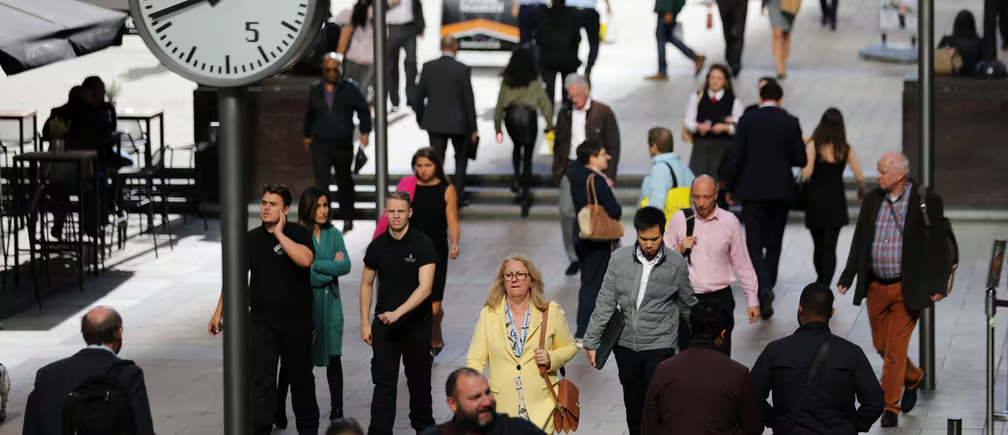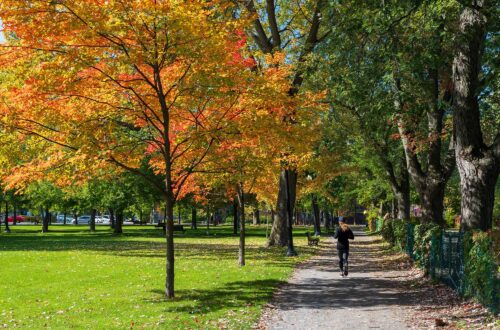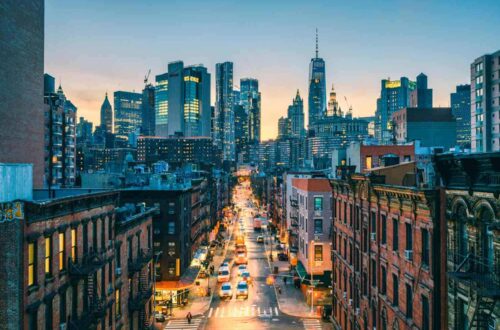Imagine waking up to the hum of a bustling city, where the scent of fresh coffee from a nearby café mingles with the distant sound of honking taxis. For some, this scene might evoke stress, but what if I told you that city living could actually make you healthier and happier? Research is flipping the script on urban life, showing that densely packed neighborhoods, vibrant social scenes, and access to green spaces can do wonders for your body and mind. As someone who’s traded quiet suburbs for the electric pulse of city streets, I’ve felt this firsthand—there’s something invigorating about being in the heart of it all. Let’s dive into the science, stories, and surprising benefits of urban living that might just make you reconsider what makes a good life.
Why Cities Are Good for Your Health
Cities are often seen as concrete jungles, but they’re also hubs of opportunity that can supercharge your physical well-being. Studies, like one from The Lancet, show that urban environments promote active lifestyles through walkable streets, public transit, and accessible amenities. Unlike sprawling suburbs where a car is king, cities encourage you to move—whether it’s a brisk walk to work or a bike ride to the park. This constant motion isn’t just good for your step count; it reduces risks of obesity, heart disease, and diabetes.
Walkability: The Urban Fitness Advantage
Living in a compact city means you’re more likely to ditch the car and lace up your sneakers. A 2025 study in Nature found that moving to a walkable city increased daily steps and exercise, with effects lasting over three months for most people. I remember moving to Chicago and being shocked at how my fitness tracker lit up just from walking to the grocery store or meeting friends for dinner. Cities like New York or London, with their pedestrian-friendly designs, make exercise a natural part of daily life.
Access to Healthcare: A Lifeline in the City
Urban areas often boast top-tier healthcare facilities, from specialized clinics to world-class hospitals. Research from the World Health Organization highlights that city dwellers have better access to quality healthcare, which can mean faster emergency response times and more preventive care options. When I sprained my ankle last year, I was at a city hospital within 20 minutes, getting top-notch care. In rural areas, that same trip could’ve taken hours. This proximity can be a game-changer for both routine and urgent health needs.
The Happiness Factor: Why Cities Spark Joy
Beyond physical health, cities have a unique ability to lift your spirits. The World Happiness Report ranks urban areas based on residents’ self-reported well-being, showing that cities often outperform rural areas due to social connections and cultural vibrancy. Cities are like giant playgrounds for adults—there’s always a concert, a new restaurant, or a quirky art exhibit to spark joy. My first night at a rooftop jazz event in downtown Austin felt like a hug from the universe, surrounded by strangers who quickly became friends.
Social Connections: The Heartbeat of Urban Life
Humans are social creatures, and cities are built for connection. Research from The Lancet emphasizes that tight social networks in urban areas foster emotional bonds, reducing loneliness and boosting mental health. I’ve lost count of the impromptu coffee chats I’ve had with neighbors at local cafés—something harder to come by in quieter suburbs. Cities create spaces where you’re never far from a friendly face, whether it’s at a community yoga class or a bustling farmers’ market.
Cultural Riches: Feeding the Soul
From museums to street festivals, cities are bursting with cultural experiences that feed happiness. The World Happiness Report notes that urban dwellers often report higher life satisfaction due to access to leisure activities. I still smile thinking about stumbling upon a free outdoor movie night in a city park last summer—it was a small moment, but it felt like the city was throwing me a gift. These experiences aren’t just fun; they’re a reminder that life is full of possibilities.
The Role of Green Spaces in Urban Wellness
One of the biggest surprises in urban health research is the power of green spaces. Parks, urban forests, and even rooftop gardens can transform city life, offering a natural escape from the hustle. A 2022 study analyzing 1.5 million tweets found that people expressed more happiness in urban parks than outside them, with the effect rivaling major holidays like Thanksgiving. I’ve felt this myself, finding calm during a lunch break stroll in a city park, where the sound of leaves rustling drowned out the traffic.
Biophilic Cities: Nature Meets Urban Design
Cities like Singapore are leading the charge in biophilic design, weaving nature into the urban fabric. Research from the University of Southern California shows that even a single plant in a workspace can reduce stress and anxiety. When I visited Singapore, I was floored by skyscrapers draped in greenery—it felt like stepping into a sci-fi utopia. These designs don’t just look cool; they lower stress hormones and boost mood.
Mental Health Benefits of Urban Greenery
Green spaces aren’t just pretty—they’re a mental health lifeline. Studies in Denmark found that kids raised in greener neighborhoods were 55% less likely to develop mental illnesses. I’ve seen this in action: a friend who struggled with anxiety found solace in daily walks through a city arboretum. Urban parks offer a space to breathe, reflect, and recharge, countering the mental toll of city life’s fast pace.
The Flip Side: Challenges of City Living
No story about city life is complete without acknowledging its challenges. While cities can boost health and happiness, they also come with pitfalls like pollution, noise, and social isolation. Research from Psychology Today links urban living to higher risks of anxiety and depression, especially in poorly designed cities. I’ve had nights where the constant hum of traffic kept me awake, reminding me that cities aren’t perfect. But the key is balance—cities that prioritize smart design can mitigate these downsides.
Pollution and Noise: The Urban Trade-Off
Air and noise pollution are real concerns in cities, with studies showing they can increase stress and health risks. The World Health Organization reports that 90% of city dwellers breathe unsafe air, contributing to conditions like heart disease. I’ve coughed my way through smoggy days in big cities, but I’ve also seen how bike lanes and green initiatives are fighting back. Choosing neighborhoods with cleaner air or quieter streets can make a big difference.
Social Isolation: A Hidden Risk
Despite their crowds, cities can feel lonely. Psychology Today notes that urban social isolation is rising, with 40% of U.S. adults reporting loneliness. I’ve felt this myself, surrounded by people yet missing deep connections. Cities combat this with community spaces like co-working hubs or public events, but it takes effort to plug in. Joining a local book club or volunteering can turn strangers into friends.
Comparing Urban vs. Rural Living: A Health and Happiness Breakdown
| Aspect | Urban Living | Rural Living |
|---|---|---|
| Physical Activity | High due to walkability and public transit | Lower due to car dependency |
| Healthcare Access | Excellent, with nearby hospitals and clinics | Limited, often requiring long travel |
| Social Connections | Abundant opportunities for community engagement | Fewer social hubs, but tighter-knit communities |
| Cultural Access | Rich with events, museums, and dining | Limited, often requiring travel to cities |
| Mental Health | Boosted by green spaces, but risks from noise | Calmer, but isolation can be a challenge |
Pros and Cons of City Living
Pros:
- Walkable neighborhoods promote daily exercise.
- Access to top-tier healthcare saves lives.
- Vibrant social and cultural scenes spark joy.
- Green spaces reduce stress and boost mental health.
Cons:
- Pollution and noise can harm physical and mental health.
- Social isolation is a risk despite dense populations.
- High living costs can create financial stress.
People Also Ask (PAA)
Does living in a city improve mental health?
Yes, cities can improve mental health through social connections and access to green spaces, but poor urban design can increase stress. Studies show that well-planned cities with parks and community spaces lower anxiety and depression rates.
What are the health benefits of urban living?
Urban living boosts physical health by encouraging walking, cycling, and access to healthcare. Research highlights reduced risks of obesity and heart disease in walkable cities, plus faster emergency care access.
How do cities affect happiness?
Cities boost happiness through cultural events, social networks, and green spaces. The World Happiness Report shows urban dwellers often report higher life satisfaction due to diverse leisure options and community ties.
Where can I find cities with the best health and happiness benefits?
Look for cities with strong walkability, green spaces, and healthcare access, like Copenhagen, Singapore, or Portland. Check resources like the World Happiness Report or urban planning sites for rankings.
Practical Tips for Thriving in the City
Want to maximize the health and happiness benefits of urban life? Here are actionable steps:
- Choose a Walkable Neighborhood: Opt for areas with sidewalks, bike lanes, and nearby amenities to stay active. Tools like Walk Score can help you find the best spots.
- Visit Urban Parks: Spend at least 20 minutes daily in a park to reduce stress, as supported by attention restoration theory.
- Join Community Groups: Sign up for local events, like book clubs or fitness classes, to combat isolation. Sites like Meetup are great for finding groups.
- Prioritize Green Spaces: Seek apartments with views of greenery or proximity to parks. Even a small plant at home can lower anxiety.
- Use Public Transit: Ditch the car for buses or trains to boost steps and reduce environmental impact. Apps like Citymapper make navigation easy.
FAQ Section
Q: Can city living really make you happier than rural living?
A: Yes, for many, cities offer more social and cultural opportunities that boost happiness. However, it depends on the city’s design—green spaces and community hubs are key. Rural areas can be happier for those who prefer quiet and tight-knit communities.
Q: How do I stay healthy in a polluted city?
A: Choose neighborhoods with cleaner air, use air purifiers at home, and spend time in parks to offset pollution’s effects. Regular exercise and a balanced diet also help counteract urban health risks.
Q: What’s the best city for health and happiness?
A: Cities like Copenhagen, Singapore, and Melbourne rank high due to their walkability, green spaces, and healthcare access. Check the World Happiness Report for specific rankings tailored to your needs.
Q: How can I find green spaces in my city?
A: Use apps like AllTrails or check city websites for park directories. Local blogs or community boards often highlight hidden green gems in urban areas.
Conclusion: Embracing the Urban Advantage
City living isn’t perfect, but the science is clear: well-designed urban spaces can make you healthier and happier. From walkable streets that keep your body active to parks that soothe your mind, cities offer a unique blend of vitality and connection. My own journey from suburb to city taught me that the energy of urban life—when balanced with green escapes and community ties—can feel like a daily gift. Whether you’re strolling through a park or laughing with friends at a street festival, cities remind us that health and happiness are often just a step outside. So, next time you’re navigating the urban jungle, look for the moments that make your heart sing—you might just find they’re closer than you think.





